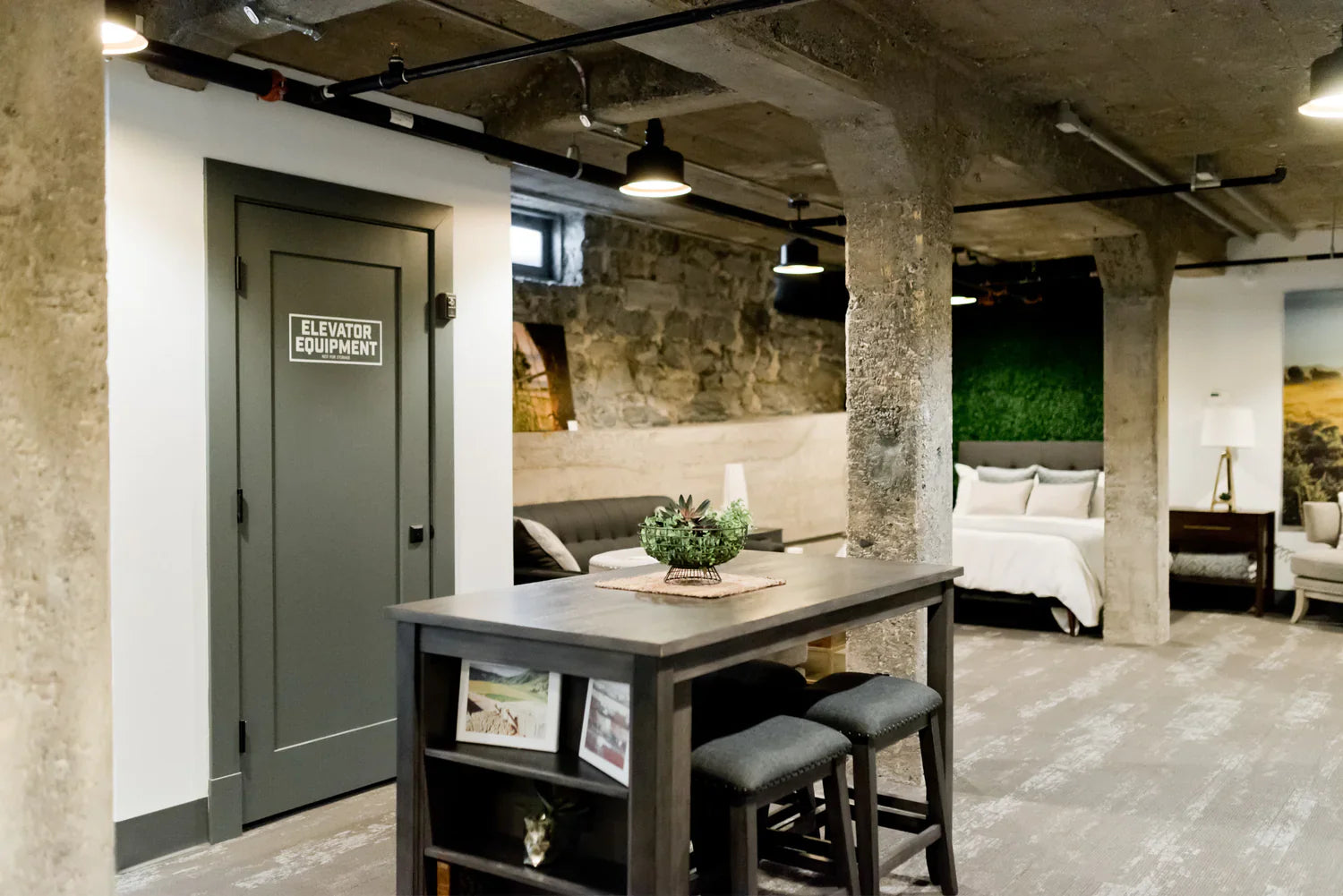The government recently capped the average energy bill to £2,500 per year per household. And while that’s still significantly better than many of the pre-cap price predictions, it is still more than double the average payment in 2019.
Because of this, savvy homeowners are looking for novel ways to save on their energy bills, including infrared panel heaters. But what are they? And how do they cut costs?
What Are Infrared Panel Heaters?There are three ways heat transfers: conduction, convection, and radiation.
Conventional radiators work by convection. Cold air enters the radiator from underneath, comes into contact with hot metal fins as it passes through, and then rises out of the top as warm air.
Infrared panel heaters, though, work using radiation. They emit a type of light that imparts energy to the surroundings, similar to the sun on a cold morning.
Because infrared panel heaters heat all objects in the space, they tend to keep rooms hotter for longer. Rather than just increasing energy levels in the air, they cause it to rise in the walls, floors, ceiling and furniture, too. These objects then re-radiate heat back into the room, helping to keep the temperature more uniform and prevent loss of heat via convection.
Infrared heat is part of the electromagnetic spectrum, just beyond visible red light. When infrared light shines on an object, it heats it directly. It doesn’t require a medium, such as air, to conduct the heat. (That’s how the sun can heat the Earth through the vacuum of space). This process makes heating action intrinsically more efficient. Lost heated air becomes less important when the main recipient of heating are the solid objects in the surrounding space.
Infrared heaters work by taking electricity and converting it into electromagnetic radiation. There are various ways they do this but most systems have some sort of filament, similar to a traditional incandescent bulb, often made of tungsten wire. As resistance builds in the wire, it throws off photons which then travel across the room and impart their energy to the surroundings. Engineers deliberately calibrate heating elements to ensure that they give off as much black body radiation as possible. They try to reduce the quantity of visible light, which isn’t as effective as a heat source. With that said, most infrared panel heaters still emit some visible light, so you can’t escape it entirely.
Why Infrared Heaters Save Money On Your Energy Bills
Despite being quite obscure, infrared heaters have been around since the 19th century. Scientist and astronomer William Herschel invented them after discovering radiation as a heat source. Since then, manufacturers have found all sorts of ways to convert electricity (or sometimes oil) into infrared light.
Infrared heaters save on energy bills for two reasons:
- Their basic efficiency
- The way they impart heat to rooms
Researchers estimate that typical infrared heaters convert approximately 86 per cent of their energy into radiative energy. The remaining 14 per cent is lost through conduction (via the physical heating of the radiative element), and convection as air passes over the hot element. In the home, all three forms of heating are beneficial (if infrared panel heaters are placed inside). That’s because they each contribute to increasing the warmth in the room. However, the higher the percentage of radiative heating, the better. The more radiation can transfer to surrounding objects, the less heat loss will occur immediately from convective draughts.
Unlike conventional heating systems, there are no system losses with infrared panel heaters. Infrared heaters don’t lose energy through pipework and walls. Rather, they generate it directly from electricity and transfer it to the room.
The practical efficiency of infrared panel heaters depends on the emitted wavelength of the light and the absorption spectrum of the surrounding material. Heating water, for instance, is easy because it absorbs most energy in the three-nanometer wavelength range.
Heating a home, though, is a little more complicated since it contains a range of materials. Engineers and manufacturers must calibrate devices to emit the kinds of wavelengths that walls, ceilings and furniture can absorb. Plastics, for instance, have a peak absorption of around 3.5 nanometres, while ceramics warm mostly anywhere in the 2 to 10-nanometre range.
How Much Do Infrared Panel Heaters Save On Energy Bills?
UK homes use virtually all their energy budget on either space heating or water heating. Combined they account for more than 84 per cent of bills, with lighting, appliances and cooking accounting for the remaining 16 per cent. Improving the efficiency of heating has a dramatic effect on bill amounts.
Therefore, the amount of energy you can save on your heating bills by using panel heaters is tremendous. Traditional estimates put the figure anywhere in the 30 to 50 per cent range but our panels may be able to save you as much as 60 per cent.
Once you install infrared heaters, you’ll notice that you can reduce your thermostat temperature by around 3-5°F. By warming objects directly, infrared heaters give your rooms higher radiant energy than standard air heaters.
Other Reasons To Try Infrared Heaters
Other than saving you money on your energy bills, infrared heaters offer a host of additional perks.
The first is that they can make you feel better. Infrared radiation warms tired, cold skin directly, rather than through air. The effects are immediate like you’re standing in front of a fire.
Next, infrared heaters are completely silent. There’s no big fan blowing air around. Instead, they are solid state and operate passively. Infrared radiation instantly bounces off the reflector and onto surfaces.
Furthermore, they’re easy to carry around. They don’t require a lot of material to construct. This means that you can put them where you want and angle them to heat you.
Money Saving Expert, Martin Lewis recommends that people “heat the human, not the home.” Infrared heaters are an excellent way to do this.
Infrared heaters also require virtually no maintenance, unlike traditional boilers and radiator systems. There are no naked flames, moving parts or water to worry about, so they tend to be far more reliable. And unlike integrated air-conditioning and heating systems, you don’t need to replace filters. Heaters don’t require air to pass over heating elements.
Do You Need To Use Infrared Heaters Alongside Regular Central Heating?
In principle, you don’t need to use infrared heaters alongside regular central heating. Infrared radiation imparts heat to your rooms, just like these other methods. However, in practice, you may require additional heating methods. Most infrared heaters are small and unable to heat the entire room.
With that said, there are bigger, more impressive products on the market, such as ours. And these provide all the energy-saving perks of traditional infrared heaters but operate at a larger scale.
Are Infrared Panel Heaters Safe?
Knowing the dangers of ultraviolet radiation, many people worry whether infrared panel heaters are safe. It turns out that they are. Infrared radiation cannot damage DNA in the skin (or other parts of the body) meaning that you can stand in its presence all day and never get burned. Infrared panels also have no naked flames, so they are a much lower fire risk.
However, you still need to be careful. Standing too close to infrared panels for too long can heat the skin up too much and cause it to blister. Manufacturers will usually tell you how far you and other objects should be from their panel heaters while in use.
How To Install Infrared Panel Heaters In Your Home
For infrared panel heaters to work effectively, homeowners need to position them correctly. Manufacturers make their panels emit radiation at all angles into your rooms so that they have the biggest effect. (This is something we can help you with).
Most panels are plug-and-play. You simply hook them up to electricity and switch them on. If you get a panel heater, you’ll want to attach it to the ceiling or walls. You may require experienced electricians or technicians to ensure an adequate power supply.
Usually, you don’t need to worry about heat escaping from the back of infrared panel heaters even if they are hot to the touch. That’s because manufacturers add a reflector behind the heating element.
It takes panels around 90 seconds to three minutes to build up to full heat intensity. After that, you should start feeling the effects immediately. Unlike conventional heating systems, you don’t need to wait for warm air to waft in your direction.
Get Infrared Panels Today And Start Saving On Your Energy Bills
At Kiasa, we offer infrared heating panels that could potentially save you up to 60 per cent on your energy bills. Our units look stunning, are safe and efficient, and protect against allergies. What’s more, they don’t rely on any changes in air humidity and are great for preventing dampness and mould. Explore our range online.



